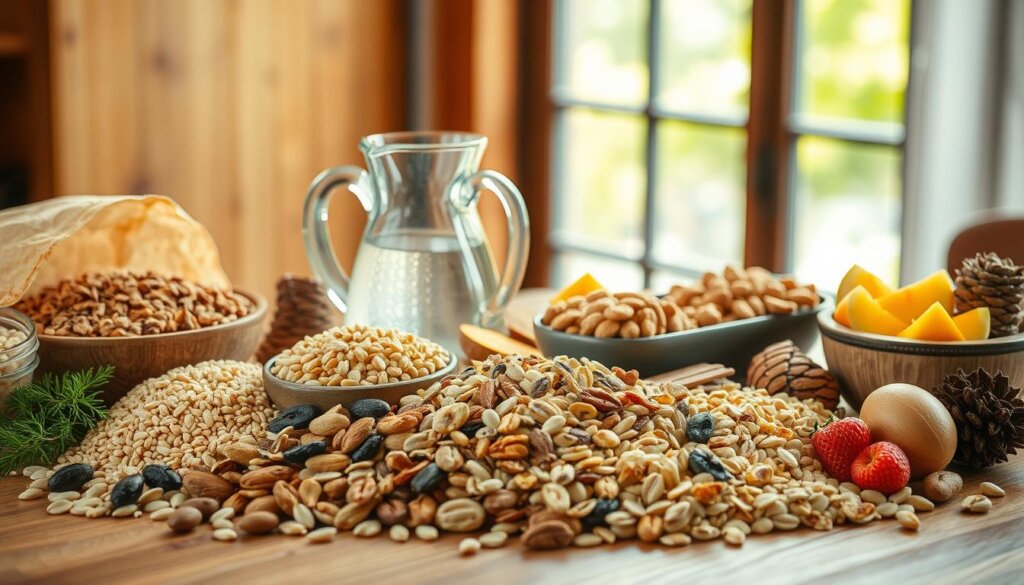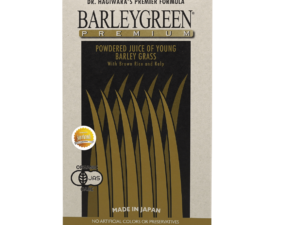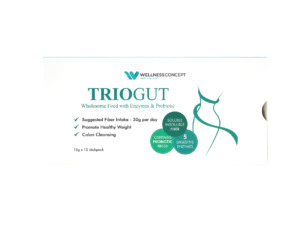While fiber supports digestion and heart health, most people consume 25% less than recommended daily amounts. This gap often stems from discomfort caused by traditional supplements – but solutions exist. Wellness Group addresses this challenge with science-backed formulas that maintain digestive comfort.
Many individuals avoid increasing their intake due to unpleasant side effects like bloating. This creates a paradox: people recognize fiber’s role in gut health yet hesitate to use it regularly. Modern nutritional science now offers alternatives that work with the body rather than against it.
Wellness Group’s approach focuses on specialized carbohydrate blends that nourish beneficial gut bacteria. These formulations help maintain regular digestion without causing distress. Users report better nutrient absorption and improved daily comfort compared to standard options.
Key Takeaways
- Most adults consume inadequate fiber despite its proven health advantages
- Discomfort deters many from achieving optimal daily intake levels
- Advanced formulas now prevent common digestive complaints
- Targeted solutions support microbiome balance and nutrient uptake
- Proper fiber selection enhances overall wellness outcomes
Introduction to the Benefits of Gentle Fiber

Click to LEARN MORE
Fiber plays a crucial role in overall wellness, particularly in supporting efficient digestion and gut function. Many people know it helps maintain regularity but don’t realize its broader impact on blood sugar balance and cholesterol management. Let’s explore how different types work and why they matter.
Why Fiber Matters for Digestive Health

Click to LEARN MORE
There are two main types of dietary fiber, each with unique functions. Insoluble varieties add bulk to stool, helping food move smoothly through the system. Soluble types form a gel-like substance during digestion, slowing nutrient absorption and stabilizing energy levels.
| Type | Primary Function | Food Sources |
|---|---|---|
| Insoluble | Supports bowel movements | Whole grains, vegetables |
| Soluble | Feeds gut bacteria | Oats, apples, beans |
Both forms act as prebiotics, nourishing beneficial microorganisms in the gut. This microbial balance influences everything from immune response to mood regulation. However, standard supplements often contain harsh fibers that overwhelm delicate digestive processes.
Understanding Sensitive Stomachs
Some individuals experience discomfort with conventional products due to rapid fermentation in the gut. This process can create excess gas and pressure, leading to bloating. Modern formulations address this by using slower-digesting fibers that minimize abrupt changes in the digestive environment.
Choosing the right blend helps maintain comfort while supporting essential functions like nutrient absorption. It’s about working with your body’s natural rhythms rather than forcing abrupt changes.
Overview: Gentle Fiber for Sensitive Stomachs (No Cramps)
Modern nutrition science addresses digestive challenges with targeted solutions. Wellness Group’s formula uses a low-fermenting fiber blend that supports bowel function without abrupt changes to gut activity. This approach helps users meet daily nutritional goals while maintaining comfort.
Key Attributes of the Supplement
The formula stands out through three core features:
- Gradual breakdown: Slowly processed to minimize gas production
- Balanced molecular chains: Designed for smooth interaction with intestinal walls
- Hydration-friendly structure: Works with water to support natural rhythms
How It Works in the Body
Unlike traditional options, this blend dissolves gradually during digestion. It feeds beneficial bacteria over 8-12 hours, reducing sudden pressure that triggers symptoms. The delayed fermentation process allows the body to adapt without stress.
Pairing the supplement with adequate water intake enhances its effects. This combination softens stool naturally, easing bowel movements. Users experience fewer digestive disruptions while achieving consistent results.
Health Benefits of Soluble & Insoluble Fiber
The synergy between soluble and insoluble fiber types offers more than just regularity—it supports overall health. These nutritional powerhouses team up to address different aspects of wellness, from blood sugar balance to digestive efficiency.
Supporting Regular Bowel Movements
Insoluble fiber acts like nature’s broom, adding bulk to stool and speeding up transit time. Found in brown rice and cauliflower, it helps prevent constipation by stimulating intestinal muscles. Soluble fiber, present in oats and apples, absorbs water to form a gel that softens waste gently. Together, they create regular bowel movements without sudden urgency.
Managing IBS and Other Digestive Issues
For those managing irritable bowel syndrome, soluble fiber’s gradual digestion helps stabilize gut activity. Its gel-like texture soothes intestinal walls, reducing diarrhea episodes. Research indicates that 30% of IBS patients benefit from controlled soluble fiber intake. Insoluble varieties may require moderation during flare-ups but remain crucial for long-term regularity when introduced carefully.
Pairing these fibers with hydration maximizes their benefits. A morning oatmeal bowl topped with blueberries and an afternoon spinach salad creates complementary effects throughout the day.
Top Natural Fiber Foods for a Healthy Gut
Fueling your gut with the right foods creates a foundation for lasting wellness. Nature offers abundant options packed with both soluble and insoluble varieties. The key lies in selecting ingredients that nourish without overwhelming delicate systems.
Whole grains like brown rice and oats deliver insoluble fiber to support regularity. Legumes such as lentils provide soluble types that feed beneficial bacteria. Combining these creates a balanced approach to digestive care.

Click to LEARN MORE
Cooked fruits and vegetables often work better for sensitive systems. Steaming carrots or simmering apples breaks down tough fibers while preserving nutrients. Sweet potatoes become particularly digestible when roasted, offering vitamins alongside their fiber content.
| Food Type | Soluble Fiber | Insoluble Fiber |
|---|---|---|
| Oatmeal | ✓ | – |
| Spinach | – | ✓ |
| Lentils | ✓ | ✓ |
Nuts and seeds add crunch and fiber to meals. Almonds and chia seeds blend well into smoothies or yogurt. For maximum benefit, pair them with hydration to help fibers move smoothly through the digestive tract.
While supplements help some individuals, whole foods offer complementary nutrients like antioxidants. A diet rich in varied sources supports gut balance naturally. Start with small portions and adjust based on personal tolerance.
How a High-Fiber Diet Relieves Digestive Discomfort
Smart fiber intake strategies transform this essential nutrient from a digestive foe to an ally. Many avoid boosting their consumption due to fears of gas or abdominal pressure. Yet research shows proper implementation can reduce discomfort by 40% compared to abrupt dietary changes.
Sudden spikes in consumption overwhelm gut bacteria, leading to temporary symptoms. A phased approach gives the microbiome time to adapt. Start with 5-gram increments every 3-4 days while monitoring your body’s signals.
Preventing Bloating and Cramping
Hydration acts as fiber’s essential partner. For every 5 grams added to meals, drink an extra glass of water. This prevents the binding effect that causes constipation-related issues.
| Approach | Benefits | Tips |
|---|---|---|
| Gradual Increase | Reduces gas production | Add 1 new fiber-rich food weekly |
| Liquid Pairing | Enhances nutrient absorption | Drink 8 oz water with meals |
| Timed Intake | Minimizes sudden impact | Spread consumption across meals |
Those transitioning to a fiber diet report fewer symptoms when choosing partially soluble sources like oats or barley. These dissolve gradually, unlike harsh insoluble types that may irritate sensitive systems.
Supplements with balanced molecular chains show promise for easing the adjustment period. Clinical trials indicate they support regularity 30% more effectively than traditional options during the first month of use.
Tailoring Fiber Intake for IBS and Sensitive Stomachs
Navigating dietary choices becomes crucial for those managing irritable bowel syndrome. Research shows 60% of IBS patients experience symptom changes when adjusting their fiber intake. The key lies in matching fiber types to specific digestive needs.

Choosing the Right Fiber Type
IBS manifests differently – diarrhea-predominant (IBS-D) and constipation-predominant (IBS-C) require opposite approaches. Soluble fiber helps stabilize loose stools by absorbing excess water, while insoluble varieties stimulate sluggish digestion. Matching the type to symptoms prevents gut irritation.
| IBS Type | Recommended Fiber | Food Sources |
|---|---|---|
| IBS-D | Soluble | Psyllium, bananas, peeled apples |
| IBS-C | Insoluble | Flaxseeds, spinach, whole grains |
Adjusting Your Daily Intake
Start with 5 grams daily and increase by 3 grams weekly. Track changes using a symptom journal. Those with bowel syndrome often find success by:
- Introducing one new fiber source every 4 days
- Drinking 8 oz water with each fiber-rich meal
- Monitoring for gas or abdominal pressure
People with irritable bowel conditions should prioritize whole foods over supplements initially. For those unsure about their needs, recognizing signs of inadequate fiber consumption helps create personalized plans. Remember – gradual adaptation allows the gut microbiome to adjust without distress.
What to Consider When Choosing a Fiber Supplement
Navigating the crowded supplement aisle requires smart evaluation. With limited regulation in the industry, consumers must become label detectives to find effective options. Start by verifying third-party certifications like USP or NSF International seals – these indicate rigorous quality testing.
Key Ingredients and Dosage
Examine the fiber content per serving and compare it to daily needs. Most adults require 25-38 grams daily, but supplements should only fill gaps in existing diets. Look for these markers:
| Factor | Ideal Range | Red Flags |
|---|---|---|
| Daily Value % | 10-20% per serving | Over 30% (may cause overload) |
| Fiber Types | Mix of soluble/insoluble | Single-source formulas |
| Additives | None or minimal | Artificial sweeteners |
Gradual introduction matters more than the amount. Begin with 3-5 grams daily, increasing weekly as tolerance develops. Those with dietary restrictions should check for gluten-free or vegan certifications.
Potential Side Effects and Prevention
Even quality supplements may cause temporary gas during adjustment periods. Reduce discomfort by:
- Drinking 8 oz water with each dose
- Taking with meals rather than on empty stomach
- Splitting doses between morning and evening
Reputable brands transparently list origin details and manufacturing locations. Malaysian consumers should prioritize products with ASEAN GMP certification for guaranteed safety standards. Remember – consistency beats quantity when building sustainable habits.
Wellness Group’s Commitment to Digestive Health
Supporting digestive wellness requires more than quality products—it demands personalized care. Wellness Group combines science-backed formulas with human-centered service to help users achieve lasting comfort. Their approach bridges nutritional expertise with real-world lifestyle needs.
The company’s specialized team includes nutritionists who understand modern dietary challenges. They craft solutions for those seeking to improve gut function without discomfort. This focus on individualized care sets their services apart in the wellness industry.
Contact Us via WhatsApp: +60123822655
Have questions about optimizing your fiber intake? Wellness Group’s experts provide quick guidance through WhatsApp. Share your concerns about digestive health or product use, and receive tailored advice within business hours.
This direct communication channel simplifies getting professional support. Whether you’re managing gut inflammation or seeking targeted digestive strategies, their team offers science-based recommendations. No automated responses—just human expertise when you need it.
Business Hours: Monday 9:30 am-6:30 pm to Sunday 10 am-5 pm
Wellness Group maintains extended hours to accommodate diverse schedules:
- Weekdays: 9:30 AM – 6:30 PM
- Weekends: 10:00 AM – 5:00 PM
These hours ensure consistent access to nutritional guidance. The team helps users integrate fiber-rich routines that support the gut microbiome. Their mission? To make digestive wellness achievable through education and quality products that promote overall health.
Listicle – Ways to Boost Your Fiber Intake Without Cramping
Many struggle to increase their daily fiber intake due to digestive concerns. These practical approaches make it easier to meet nutritional goals while maintaining comfort.

Digestion-Friendly Meal Options
Certain foods provide essential nutrients without overwhelming the system. Cooked apples and peeled pears offer soluble fiber that dissolves gradually. Steamed carrots and mashed sweet potatoes deliver vitamins with easier breakdown.
| Food | Fiber Type | Benefit |
|---|---|---|
| Oatmeal | Soluble | Stabilizes digestion |
| Bananas | Both | Natural prebiotic |
| White rice | Low-residue | Gentle base |
Pair these with lean proteins like baked fish or poached eggs. Bone broth soups create nutrient-rich meals that support gut lining health.
Daily Routine Enhancements
Small changes yield significant results. Try these adjustments:
- Start mornings with chia seed pudding soaked overnight
- Swap afternoon chips for roasted chickpeas
- Add flaxseed to yogurt before bed
Hydration remains crucial – sip water between meals rather than during eating. This practice helps move nutrients smoothly through the digestive tract.
| Time | Action | Benefit |
|---|---|---|
| 7 AM | Warm lemon water | Activates digestion |
| 12 PM | Steamed veggies | Midday fiber boost |
| 3 PM | Almond snack | Sustained energy |
Those managing dietary restrictions find success by introducing one new food every 72 hours. Track reactions in a food journal to identify optimal options.
Expert Tips for Incorporating Gentle Fiber into Your Diet
Smart adjustments make boosting daily intake achievable while keeping digestion smooth. Nutrition professionals emphasize practical methods that align with modern lifestyles and taste preferences.
Strategies From Nutrition Professionals
Start small and build gradually. Add 3-5 grams daily through foods like raspberries or quinoa. This lets gut bacteria adapt without sudden changes.
Pair fiber-rich meals with hydration. Drink water before eating oatmeal or chia pudding. This combination helps nutrients move comfortably through the digestive tract.
Time intake strategically. Enjoy soluble-rich snacks like peeled apples between meals. Save insoluble sources like roasted almonds for times when you’re most active.
Blend supplements into routines carefully. Mix powders into smoothies or soups for easier absorption. Track reactions to identify ideal formulas for your system.
For personalized guidance, connect with Wellness Group’s nutrition team via WhatsApp. Their experts help tailor plans that support your unique diet goals and digestive needs.
FAQ
How does Wellness Group’s fiber supplement prevent cramps?
The formula uses easily digestible soluble fibers like psyllium husk, which dissolve in water to form a gel. This slows digestion, reduces irritation, and supports smoother bowel movements without stressing the gut.
Can increasing fiber worsen irritable bowel syndrome symptoms?
For those with IBS, certain fibers may trigger discomfort. Soluble fibers, such as oats or chia seeds, are often better tolerated. Gradually introducing them while monitoring symptoms helps avoid flare-ups.
What foods are best for boosting fiber without bloating?
Cooked vegetables, peeled apples, and gluten-free grains like quinoa are gentle options. Pairing high-fiber foods with hydration ensures smoother digestion and minimizes gas.
How does soluble fiber differ from insoluble types?
Soluble fiber dissolves in water, forming a gel that aids blood sugar control and softens stools. Insoluble fiber, found in whole wheat, adds bulk to stools but may irritate sensitive systems if overconsumed.
What’s the ideal daily fiber intake for someone with digestive issues?
Start with 15–20 grams daily, focusing on soluble sources. Gradually increase intake while tracking how the body responds. Consulting a nutritionist ensures personalized adjustments.
Are there side effects when starting a high-fiber diet?
Sudden increases may cause temporary bloating or gas. Drinking plenty of water and spacing fiber intake throughout the day helps the gut adapt comfortably.
How can I contact Wellness Group for product inquiries?
Reach their team via WhatsApp at +60123822655 during business hours: Monday 9:30 AM–6:30 PM to Sunday 10 AM–5 PM. They offer guidance on supplements and digestive health strategies.
Do nutritionists recommend specific brands for sensitive stomachs?
Brands like Metamucil (with psyllium) or Benefiber are often suggested. Wellness Group’s supplement is designed for easy absorption, but individual tolerance varies—patch testing is advised.
Can fiber improve gut microbiome health?
Yes! Soluble fibers act as prebiotics, feeding beneficial gut bacteria. A balanced microbiome supports immune function and reduces inflammation linked to digestive disorders.
What lifestyle changes complement a high-fiber diet?
Staying hydrated, exercising regularly, and managing stress enhance fiber’s benefits. Pairing these habits with balanced meals optimizes gut health and reduces discomfort.






